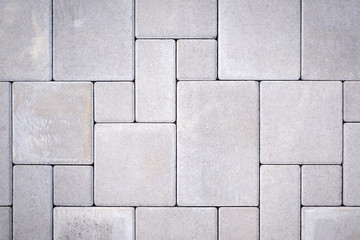Pavers, also known as concrete pavers, have been an increasingly popular outdoor flooring choice for years. Like ceramic tiles, pavers come on-site ready for installation. They are typically manufactured in specific shapes, sizes, and patterns. In addition, you can either select from pre-fabricated or custom-designed paver patterns. So whether you’re looking for a distinctive design or a more organic look, the unique look of concrete pavers can be achieved quite easily, depending on your creativity and budget constraints.

The majority of pavers used for driveway and patio installations are constructed with asphalt or concrete slabs. Most people choose this material because it is durable, extremely malleable, and resistant to frost and rain. In terms of per square foot, the cost of repairing a single pavers drive is approximately two to six cents. For comparison purposes, replacing a single lane of concrete slabs can cost up to one and a half cents per square foot.
When you begin installing pavers, you’ll find that most of the cost is for the labor of digging, breaking up, and positioning the slabs. Although pavers are typically laid on level ground, some do experience slight differences in height and slope. Pavers that are laid on uneven ground are most likely to develop cracking, holes, and cracks. Cracking isn’t always visible, so it’s essential to ensure the concrete slabs are correctly positioned and carefully. Pavers with cracks will require additional repairs that may include cement replacement or new concrete slabs.
Cracks frequently occur in two different places on a pavers surface: at corner joints and along the length of the entire slab. Sometimes, however, the crack moves inward instead of outward, causing a bump on one side of the pavers. Because of this, pavers with inward cracks generally require the same maintenance as those that have outward cracks. In general, a small amount of time should be devoted to repairing an inward crack, which could include installing new concrete slabs or repairing the loose mortar that initially held the pavers together. More significant problems may necessitate the need for concrete replacement.
Laying pavers does not end with their installation. When the concrete pavement has started to chip or crack, there are many options available to help reduce the visual impact of the damage. Pavers can be replaced, repaired, sanded, or repainted in most cases to return the area to its original appearance. As you can see, the price of laying pavers is dependent upon many factors, including the length of time required to correct existing problems, the total cost of repairing existing pavement, the cost of hiring a contractor to complete the work, and the extent of the damage.
When concrete pavement cracks, it is essential to repair the crack’s area to prevent a larger crack from developing. Cracks can occur in different areas at different times, depending on the overall construction of the area. Laying pavers is just one step in the installation process. Once the pavers have been laid, they must be cared for to ensure their longevity and effectiveness. Unfortunately, repairing cracked pavers can be more costly than their initial installation costs.
If a small crack pops up in a paver, the best way to address the problem is to repair the crack using a sealant. If deeper cracks are present, a layer of tar paper will need to be applied to the area to seal the crack. Pavers can be reused once the entire installation process is complete, but repeated re-installations may be necessary, depending on the severity of the problem area. In addition, it is always recommended to contact a paving stones supplier before starting any installation projects to provide assistance to determine the proper size and type of pavers to use in the problem area.
For those looking to purchase paving stones or pavers for their driveway or walkway, it is essential to remember that each type of paving stone installation is unique. For example, some installation methods may require heavier materials such as sand or crushed stone to achieve an even surface, while others are only compatible with less heavy materials. Therefore, the cost of each installation method will vary according to the weight of each material being used and the average size of the area being paved. Because of this wide variety of choices, it is recommended to consult with a paving stone supplier to obtain the information and advice needed for an accurate calculation of each pavers’ installation costs.